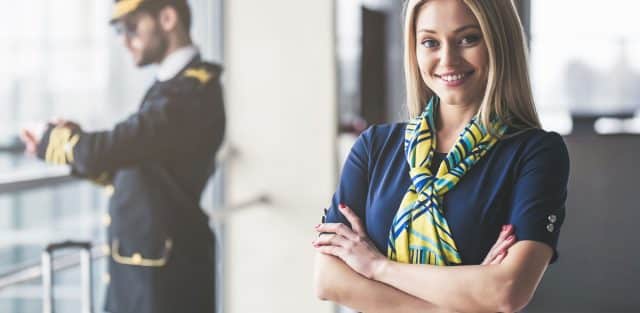
Cabin vs. Flight Attendants on Executive Jet Charters
They are usually the first person to greet you as you board an executive jet charter. A cabin attendant or flight attendant will guide you to your seat, help stow your carry-on items, and ensure you have a safe, comfortable flight.
But there is much more to these customer service professionals than seatbelt demonstrations and coffee refills. Just like the pilots, there is a high level of training required for anyone that works inside the cabin of an aircraft. Here is the quick guide to the difference between cabin attendants and flight attendants.
Cabin Attendants
This is the first tier of in-flight customer service for an executive jet charter. Cabin attendants usually have obtained a Cabin Crew Certificate from a career college or online university. Frequently cabin crew trainees will have customer service experience from other industries, such as hotels, restaurants or cruise ships.
The training courses typically cover communication skills, technical knowledge, standard safety procedures, and service responsibilities. The emphasis is on broad knowledge, with a focus on service.
While many cabin attendants go on to become certified flight attendants, their training also allows them to move on to other aviation-related careers such as customer service agents, airline ambassadors, and gate attendants.
Flight Attendants
Joel Thomas, the founder of Stratos Jet Charters, summarizes the qualities of flight attendants like this: “There are differences between a cabin attendant (not cabin crew) and a flight attendant. Both are customer experience-focused, but the flight attendant requires FAA (Federal Aviation Administration) certification. The certification is mostly oriented around safety training. But a flight attendant is more valuable and can command a higher rate.”
Depending on the aircraft you charter, a flight attendant may be required onboard. If you’re flying within the United States on a heavy jet–such as a Gulfstream GIV-SP or Embraer Legacy 650–or an ultra-long-range private–Gulfstream G700 or Lineage 1000–expect to see a flight attendant on your flight.
To become an FAA-certified flight attendant on an executive jet charter, an attendant must demonstrate proficiencies in first aid, fire control, aircraft evacuation, and other emergency procedures. A well-trained flight attendant is the first line of defense for safety and security in the aircraft.
Flight Safety
As the FAA declares on their homepage, “Safe skies is everyone’s responsibility.” Well-trained pilots, cabin crew, mechanics and air-traffic controllers have a professional obligation to safety.
But even the flying public has an important role to play. When booking an executive jet charter, you can ensure your own safety by discussing your travel needs with the Stratos Jet Charter agent. Is there someone in your group who is a mobility-impaired? Are you bringing an animal on the flight? Is there an armed bodyguard escorting a VIP on a flight? We respect our clients’ privacy, but we also need to know the facts to ensure a smooth, safe executive jet charter flight for everyone.
If you are interested in other Stratos safe skies initiatives, have a look at our Air Charter Safety page.
When you are ready to book with a jet charter company that’s committed to exceptional comfort and safety, call Stratos Jets Charters at 888-593-9066.









